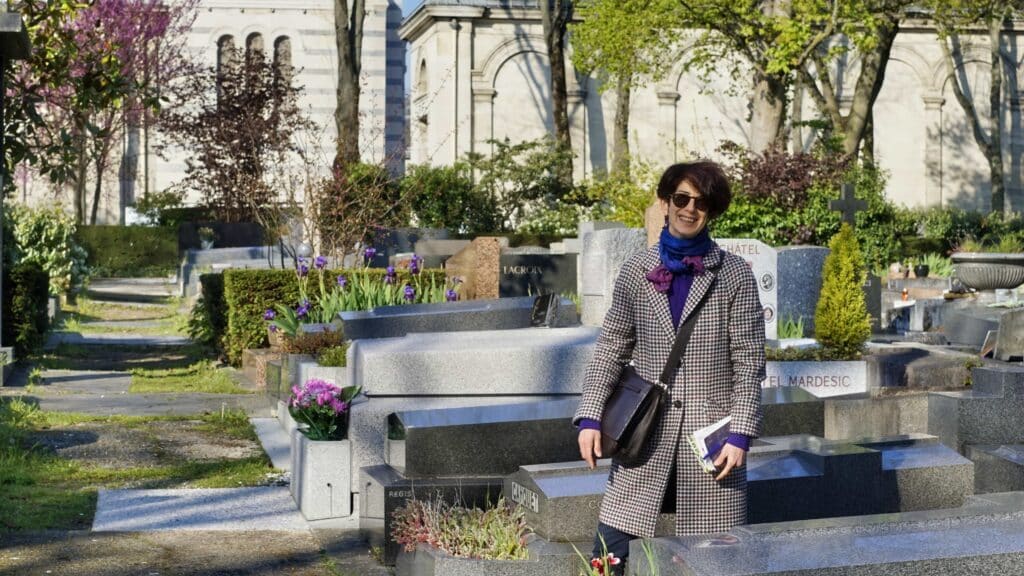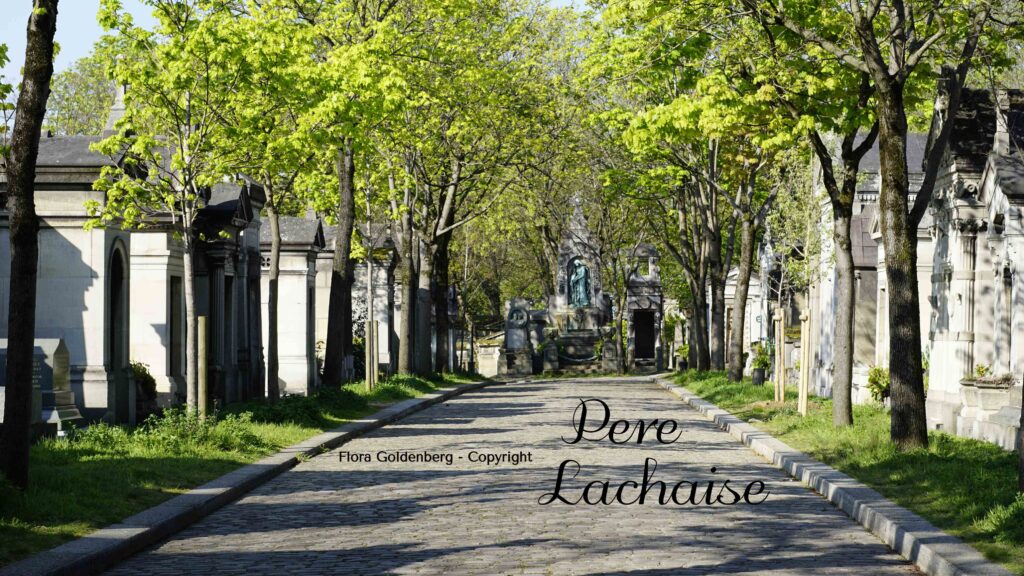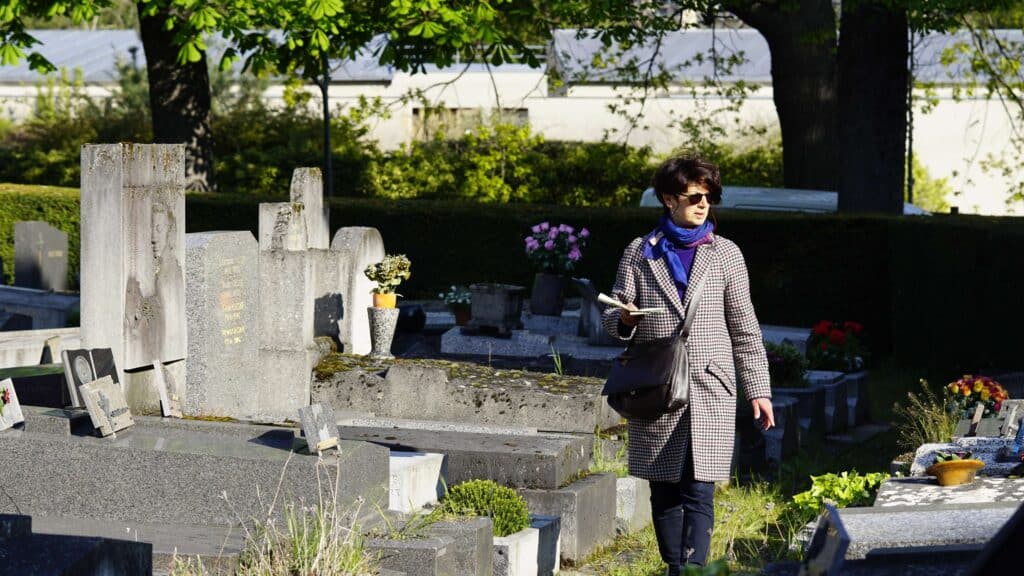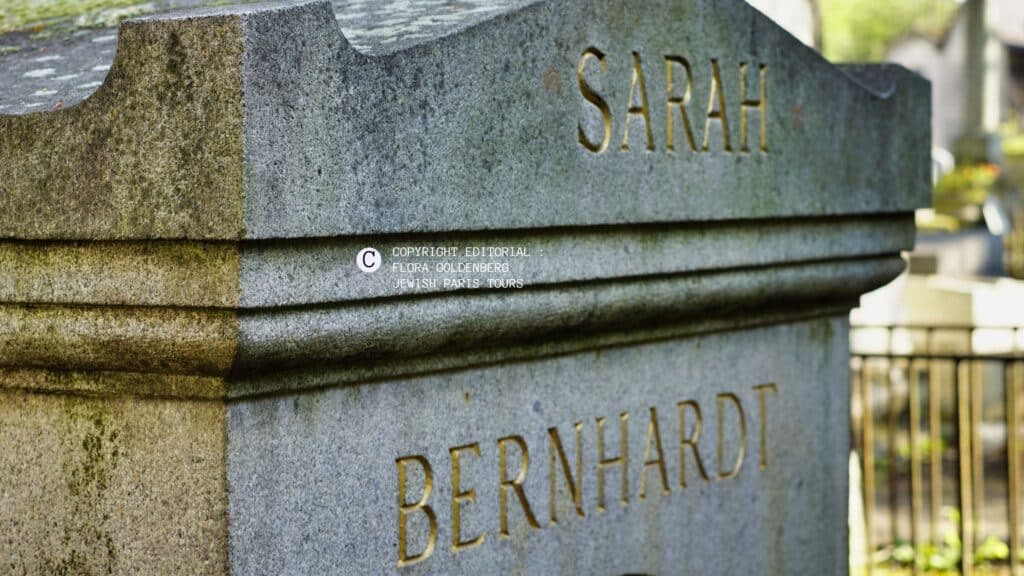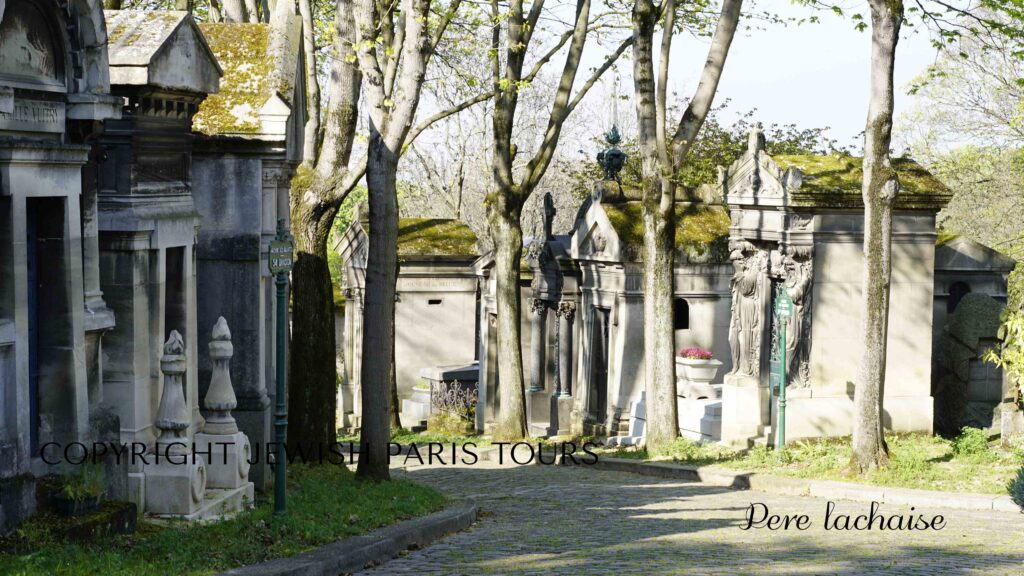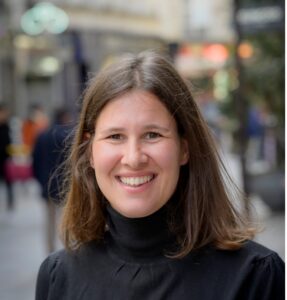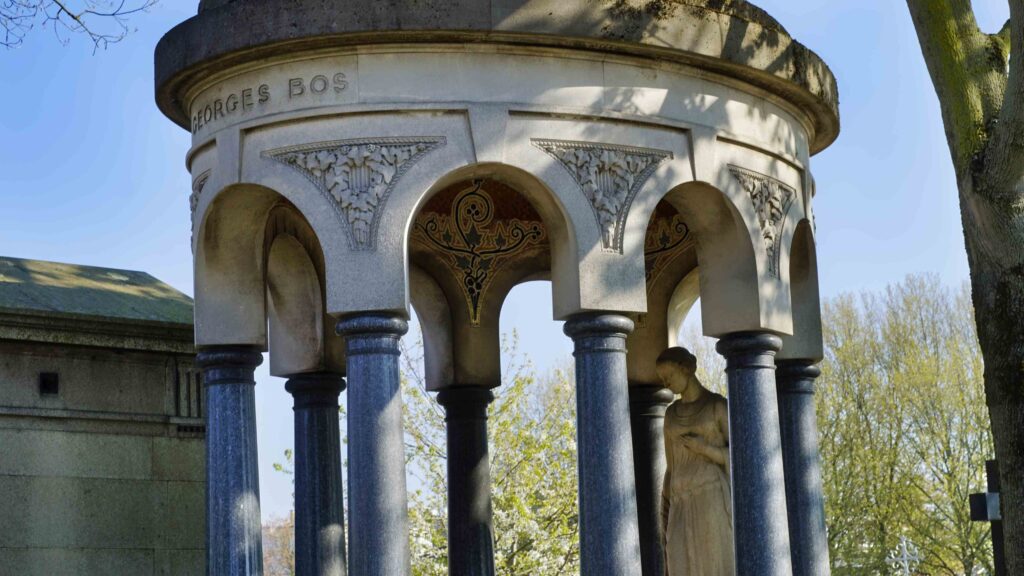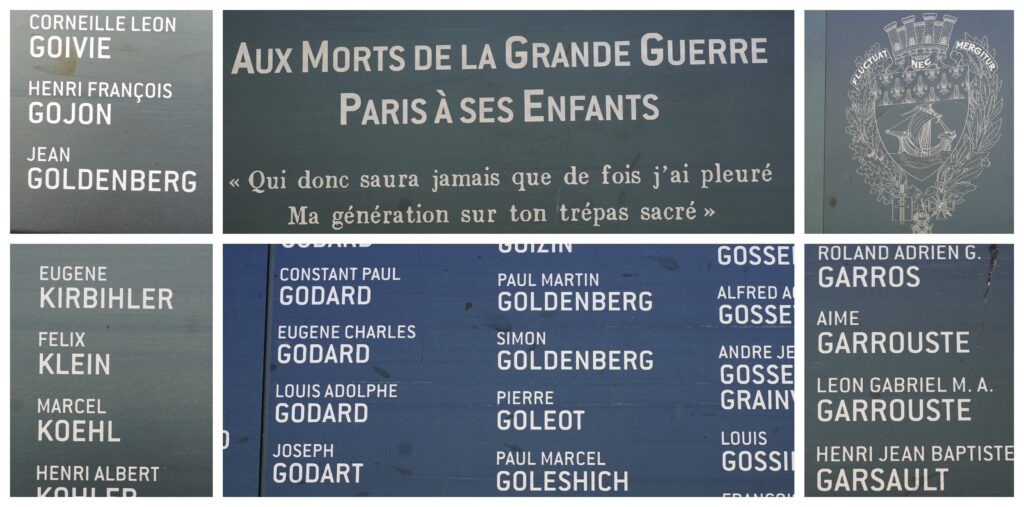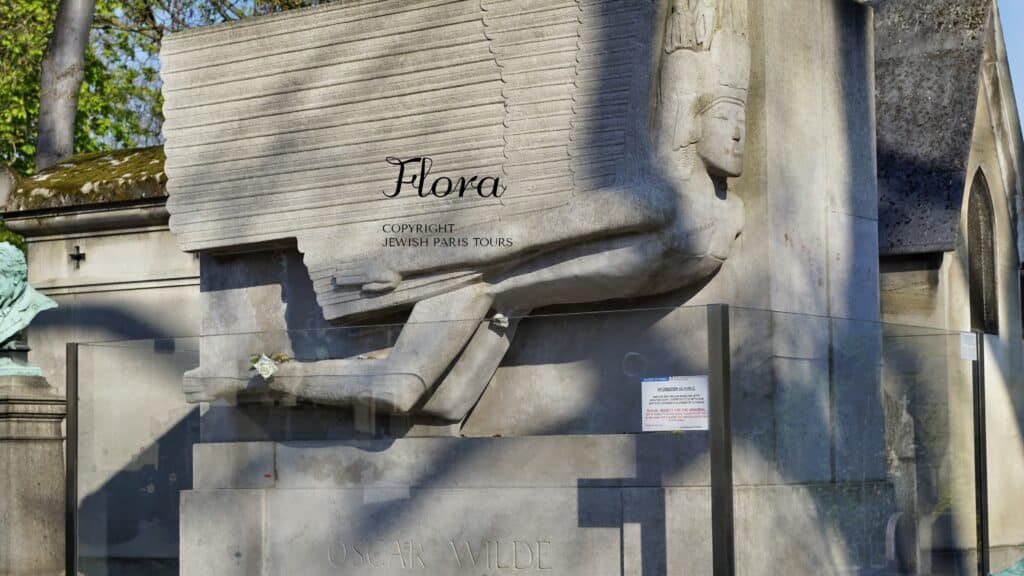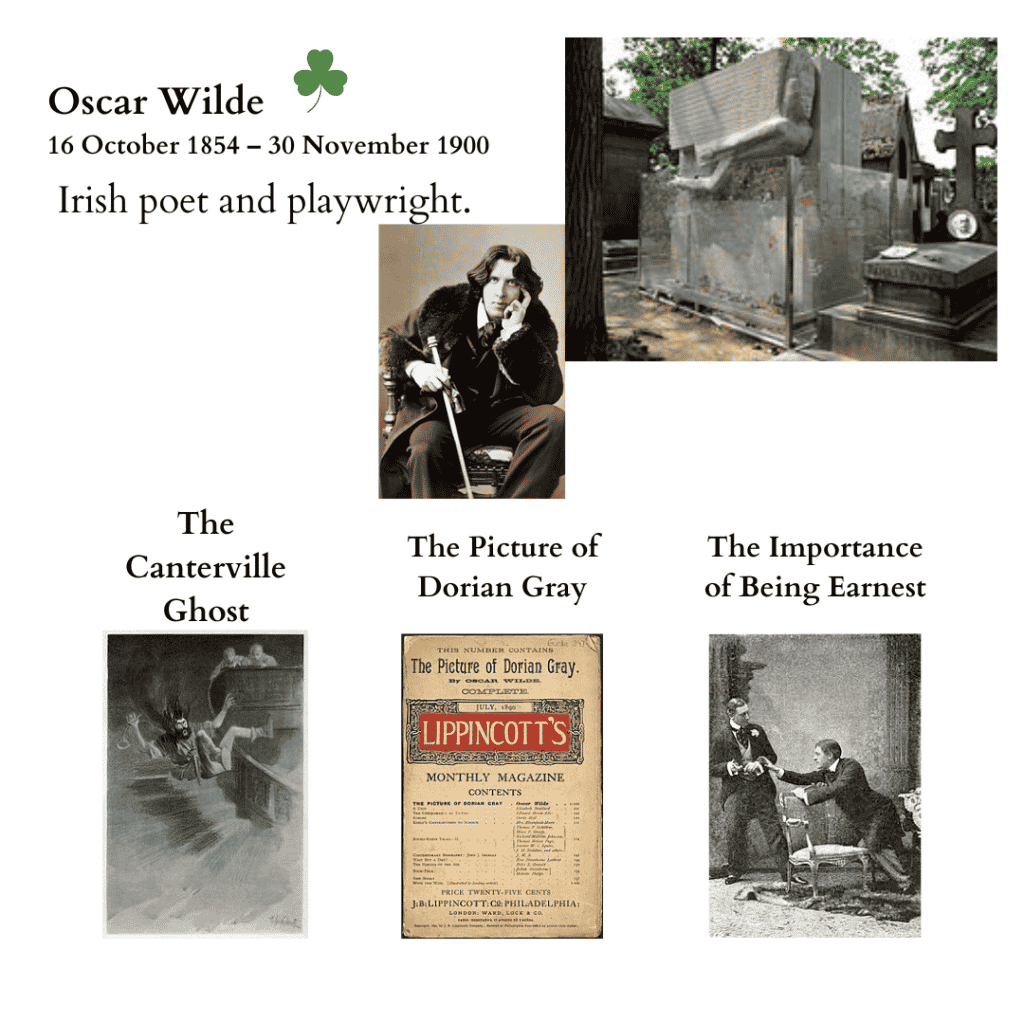Visit Pere Lachaise cemetery
Duration : 2 hours to 3 hours
Languages : English or Hebrew
Location : Pere Lachaise – Gambetta in the 20th arrondissement of Paris center, France
Trained Guides on this private tour : Livia & Flora
Possible tours : The Jewish personalities / The women personalities / The general highlights of Pere Lachaise
What is Pere Lachaise Cemetery?
The Père-Lachaise cemetery is not only a prestigious burial ground but also a Parisian landmark, an open-air museum ranked as one of the most beautiful and the most visited cemetry in the world.
Our Guided tour of Pere Lachaise
The Cemetery is a bit difficult to discover on your own for a first time visit. There is too much to see and not enough material is provided by the city except booklets and PDFs.
As we stroll seamlessly through its grounds, together with a knowledgeable Jewish tour guide, we can discover the tombstones of some of the most famous Jewish personalities, but also the French Famous peeronsalities such as Honoré de Balzac (writer) , Colette (writer and feminist), Eugène Delacroix (famous painter), Marcel Proust (famous writer) and Sarah Bernhardt (famous actress) and few international celebrities : Oscar Wilde, Jimmy Morrison …
The list of famous individuals who are buried here includes 40 singers, 40 composers and 75 painters.
Who is buried in Pere Lachaise Cemetery?
The lovers Heloise and Abelard, who lived in the Middle Ages, were the first famous people to be buried in the “Cemetry of the East” in 1817, when the cemetery was still new and not yet attractive. To make it more attractive, the remains of Molière and Jean de La Fontaine were relocated here the same year.
Jim Morrison’s tomb is the most visited one in the cemetery. Legions of fans come to pay their respects to the singer every year on 3 July, the anniversary of his death. Oscar Wilde, Gertrude Stein, Edith Piaf are just some more names of notable people’s tomb that we can find at the cemetery of Pere Lachaise.
The visit of Père Lachaise
We will discover Paris History in a different way, through the stories of the lives of these unique personalities, who left their marks in art or history.
You will hear many anecdotes, while discovering the most unique park of Paris, which is still considered today as one of the biggest green spaces in the city.
Parisians like to walk through the Pere Lachaise cemetery to enjoy the quiet atmosphere of this park, built on the hill, that offers one of the most unique views of the city of Paris.
The cemetery has more than 5,000 trees, including a 100-year-old maple tree.
In a quiet place in Paris, away from the cars and the crowd, we will enjoy a pleasant moment learning about amazing biographies of Musicians, Painters, Writers…
Contact us : Livia and Flora
Booking by email for this private tour of Pere Lachaise
Flora Goldenberg ( flora.goldenberg@gmail.com )
More about the History of Pere Lachaise
The history of Pere Lachaise can be traced back to the late 18th century when the city cemeteries in Paris were getting full and unhealthy, prompting the city administrators to accelerate the plans to develop larger cemeteries outside the Eastern side of the city.
The escalating problem of overcrowded cemeteries in the city became the brainchild idea behind the opening of Pere Lachaise cemetery in 1804 by Napoleon I. The name of the cemetery was coined from Louis XIV confessor, Pere Francois de La Chaise who resided within the divisions of the cemetery in the 17th century. The 17 hectares of Mount Louis located on a hillside was purchased by the city of Paris in 1804 with an aim of transforming it into a cemetery. Alexandre-Theodore Brongniart, a neoclassical architect was tasked with the responsibility of designing the cemetery. Drawing his inspiration from the English-style gardens, he came up with a design of the cemetery with uneven paths adorned with trees of different species, alongside carved graves.
At the initial years following its grand opening in 1804 at the behest of Napoleon I, the cemetery attracted few burials as the Parisians considered it far away from the city. Additionally, the Roman Catholics failed to take cognizance of the cemetery to bury their loved ones on the premise that the place was not sanctified by the church. Consequently, the cemetery harbored 13 graves only in 1804. The administrators of the cemetery embarked on a radical marketing campaign to ameliorate the cemetery’s stature and attract more interments. To do so, the remains of Jean de La Fontaine, a French Poet and Moliere, a well-known French playwright were relocated to the cemetery in less than a year after its opening. Despite failing to prove its popularity within its first years, the move augmented the profile of Pere Lachaise. As a result, there were 44 internments in 1805 rising to 833 in 1812.
It was enough for Paris, a city of 700 000 inhabitants at that time. So, the administrators engaged a more radical “marketing campaign” to woe more internments in the greatly revered cemetery. In 1817 at the behest of Josephine Bonaparte, the remains of Abelard, the renowned Medieval French philosopher and poet were transferred to the cemetery. It was followed by the transfer of the remains of Heloise, a French nun, philosopher and writer alongside his monument canopy. With the two latest entombment of two significant personalities at the entrance of the cemetery, a huge influx of internments followed rising to more than 33,000 in 1830.
As people clamored to get interred among the famous people, the need for expansion emerged to cater the needs of the rising numbers. In the subsequent years, the Pere Lachaise has registered an influx in numbers of internment including famous personalities and writers, culminating to more than 1 million bodies interred as at the present.
Famous People Buried in Pere Lachaise
Heloise
Heloise was a French nun, philosopher and writer synonymously renowned as the Woman of Letters.
Apart from writing, she held high reference as a philosopher of Love & Friendship whose iconic quotes are still relevant today. She was also a highly classified abbess in the Catholic Church. Born near Paris France around 1100, she is reputed for her intelligence and her gift in writing growing up as a young woman. She wrote plays, hymns and poems.
“I have long examined things, and have found that death is less dangerous than beauty.” Héloïse – Quote from The Love Letters of Abelard and Heloise
Her fame also originated from her love relationship and correspondence with Abelard, the medieval theologian who later became her collaborator and husband. In her philosophical works and writings, she is acknowledged for exuding critical intellectual impact and raising mind-boggling questions in the minds of other philosophers.
She is regarded an epitome of French literature and primordial inspirer for the courtly love practice based on her surviving letters. She is well known for erudite correspondence the foundation of bildungsroman genre in the Latin based classical epistolary. She is an iconic figure in establishing a blueprint for the representation of women in scholarship due to her controversial depiction of gender and marriage, a foundational basis for the development of the contemporary feminism.
Richard Wright
Richard Wright was born in September 4, 1908 in the Roxie plantation in Mississippi, United States. He is well known author whose interest lied in novels, poems and non-fictions. The epitome of his literature delved on the plight of African Americans subjected to racial discrimination in the late 19th century to mid-20th century in the United States.
The American born writer is famously known for his work, the Native Son. He relocated permanently to Paris at the aftermath of World War II in 1946. He naturalized as a French citizen and made friends with French writers the likes of Albert Camus, Jean-Paul Sartre and Chester Himes.
Wright’s explosive power against the racial discrimination evinced itself in his last polemical lecture in an American Church in Paris where he addressed issues of racism and segregation the Black artists faced in the United States. He contended that the American society harbored discriminatory accepted privilege to enslave the most militant blacks whenever they expressed remonstrance on the dissatisfactory segregations. Some of the Wright’s work revolving around the issue of racism and Black Movement suppression in the United States have been published posthumously such as the Black Boy, despite his death in the November 28, 1960. His remains were interred in Pere Lachaise cemetery following his demise.
Oscar Wilde
Oscar Wilde was an Irish novelist, poet and playwright whose entrance to France was by a virtue of circumstances. A British court convicted him for indecency with men, attracting a two-year imprisonment with hard labor.
After serving his jail-term he fled to exile in France where he stayed until his demise. However, during his short stint in France, he amassed massive success and popularity for his literary work.
Upon his death, his remains were interred at Pere Lachaise cemetery. Sculptor Jacob Epstein created an Egyptian-themed tomb for Oscar. However, the sculptor has sustained damages and attempts of obliteration throughout the years as visitors temper with it. The Efforts to restore and secure the original acumen of the sculpture has ended well and you can finally enjoy it during this spring or summer !
References
Hayes, J. L. (2019). 16 ‘Though I Walk through the Valley’: Teaching Richard Wright through Experiential Learning. Dark Tourism and Pilgrimage, 168.
Legacey, E. M. (2019). Making space for the dead: Catacombs, cemeteries, and the reimagining of Paris, 1780–1830. Cornell University Press.
Roark, R. (2018). Spectacular solitude, city, and self in Père-Lachaise Cemetery. Studies in the History of Gardens & Designed Landscapes, 38(2), 97-115.
Rydell, J., Eklöf, J., & Riccucci, M. (2018). Cimetière du Père-Lachaise. Bats and Vampires in French Romanticism. Journal of Bat Research & Conservafion Volume, 11, 1.
Toussaint, S., & Decrop, A. (2013). 2 The Père-Lachaise Cemetery: Between dark tourism and heterotopic consumption. In Dark Tourism and Place Identity (pp. 13-27). Routledge.
Valentine, C. (2020). A temple to transnational queerness: the politics of commemorating Oscar Wilde. European Journal of English Studies, 24(2), 146-161.
Vizetelly, E. A. (2019). Emile Zola, novelist and reformer: an account of his life & work. Good Press.
